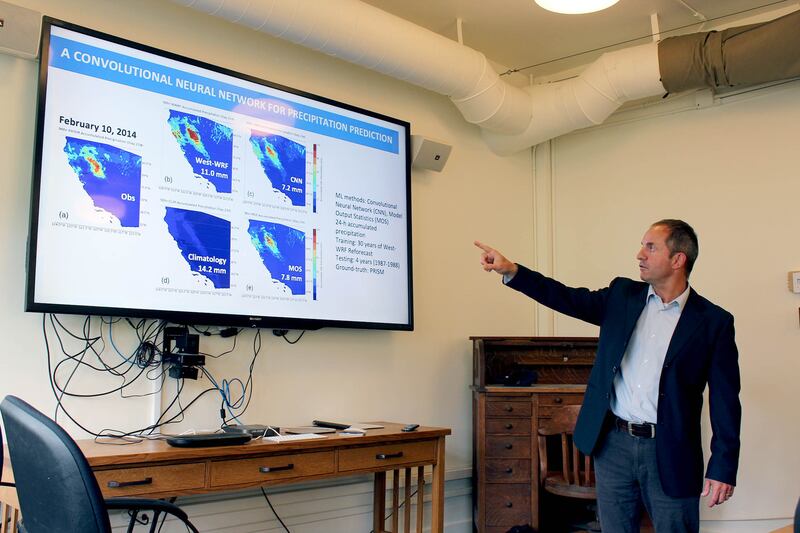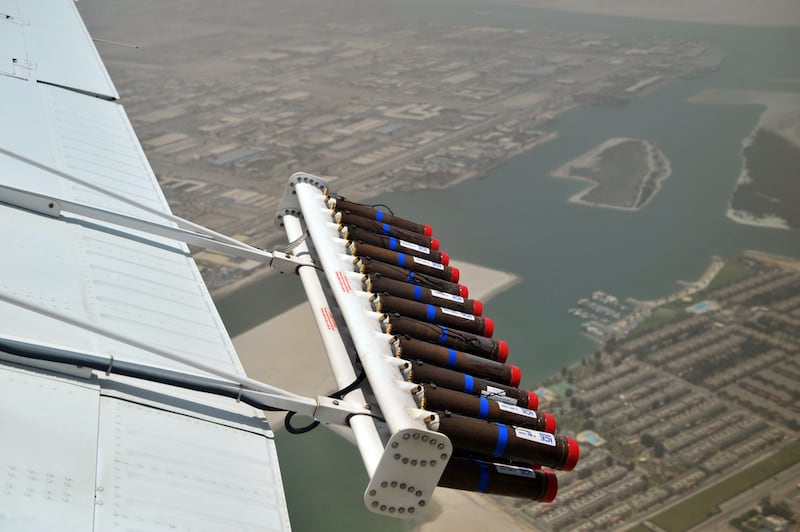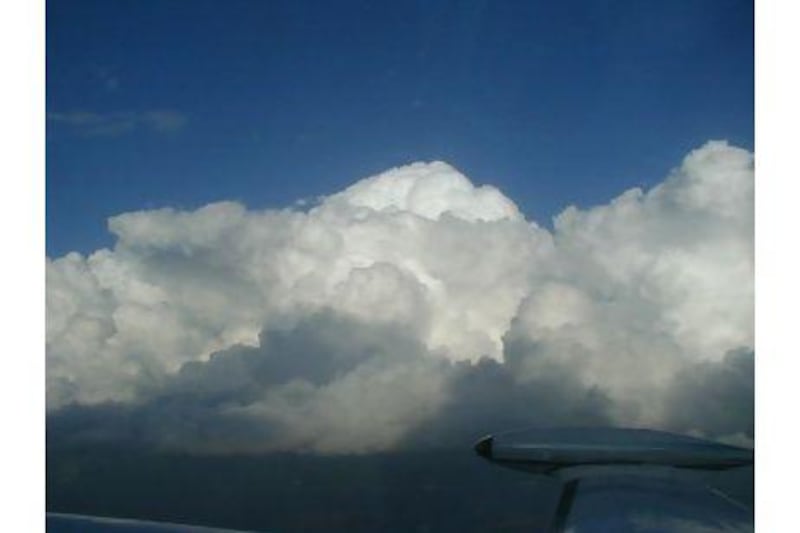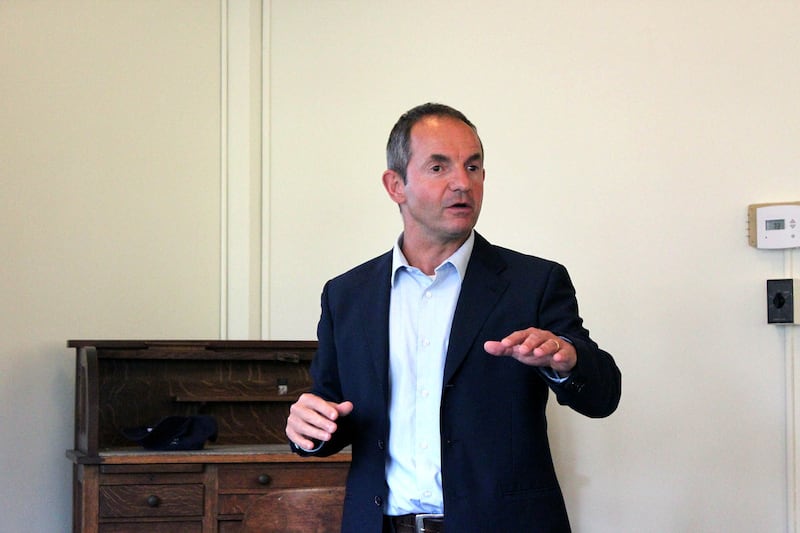The UAE could soon use artificial intelligence (AI) to bolster its cloud-seeding programme.
Scientists in the US are working on an algorithm that combines historical weather data with today's satellite reports, radar information and on the ground observations to predict where rain will fall and where is best to seed.
The software can then be used by teams on the ground in the UAE to direct seeding planes to these locations.
The work is being led by Dr Luca Delle Monache, deputy director of the Centre for Western Weather and Water Extremes at the University of California San Diego, who was awarded a $1.5 million grant this year by the UAE’s Research Programme for Rain Enhancement Science for the project.
With global droughts on the rise, the project is at the cutting-edge of machine learning that aims to help boost the planet’s water security.
How cloud seeding works
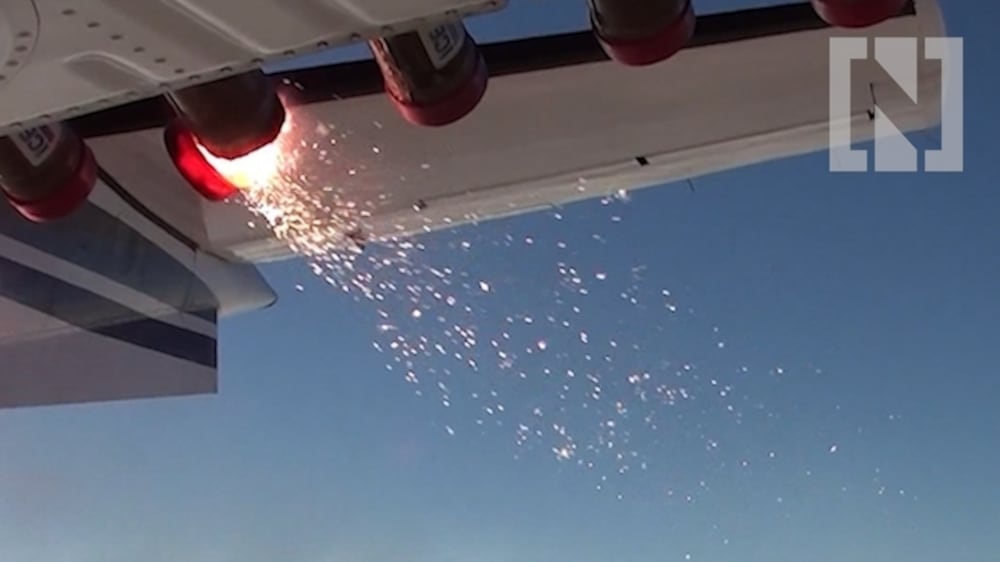
“We think we will improve the whole procedure of cloud seeding with these algorithms,” Dr Delle Monache, an expert in numerical weather prediction, data simulation and machine learning, told The National.
“We need to learn what happened in the past to make a good estimate.
"We use two thirds of the data for training and one third to see how well we are doing at estimating precipitation. That’s how we build the machine-learning model.
"Once it is built, it can be used with the data from today. That’s the goal.”
More self-sufficient
With an arid climate, the UAE’s cloud-seeding programme aims to ensure water security, provide more rain for crops and help the UAE become more self-sufficient.
Seeding essentially attempts to wring more rain from a cloud and involves shooting flares containing materials such as salt, which attracts water, into potential clouds.
Dr Delle Monache said seeding does work but it is hard to quantify “the impact of a seeding procedure”.
Experts from the National Centre of Meteorology have previously said seeding could enhance rainfall by about 30 per cent in a clean atmosphere or by 15 per cent in a dusty atmosphere. But it is complex and more research is needed.
“Precipitation is generated by a series of atmospheric processes which interact one with another," he said. "It is very non-linear; even chaotic, so it is very difficult to predict the evolution. But there are several examples where it has shown to have worked if material is injected in right areas of clouds.
"This work could lead to a more successful attempt.”
Intense rainfall and flash floods have also occurred in the UAE over the past few weeks, yet Dr Delle Monache said storm clouds were not suitable for seeding.
"[This would be a] very intense storm with a lot of intense precipitation,” he said. "These storms are easily predicted and those are not the ones the algorithms would identify as suitable for seeding because there is already intense precipitation."
The project team also includes experts from the University of Colorado and the UAE’s Khalifa University and they will also use simulation to ensure there is a solid prototype to deliver to the NCM.
It is an exciting moment for Dr Della Monache, who said the cutting-edge research project could benefit the world.
"It is at the forefront of cloud-seeding research," he said.
“Whatever we develop here for the UAE can be used across the world."
